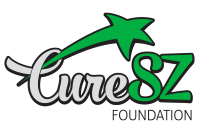
ד"ר קרייג צ'פקה, חבר, מועצת המנהלים, קרן CURESZ, פסיכיאטר פרטי ועוזר פרופסור לפסיכיאטריה, בית הספר לרפואה של אוניברסיטת צפון קרוליינה
למרות הזמינות האחרונה של טיפולים בטוחים ויעילים עבור Tardive Dyskinesia, ספקי שירותי בריאות רבים עדיין מהססים להשתמש בהם. ייתכן שהם מאמינים ש-TD לא מטריד את הסובלים ממנו או מרגישים שהשפעת ה-TD מחווירה בהשוואה לתסמינים העיקריים שהם מטפלים בהם, כמו פסיכוזה או מאניה. הניסיון שלי הוא שחלק מהרופאים פשוט לא מבינים שהתנועות הלא רצוניות עלולות לגרום לבעיות פיזיות, רגשיות ובין אישיות.
מקרה ספציפי מהתרגול שלי הוא אישה בת 61 שביקשה טיפול בדיכאון, אבל גם הבחנתי ב-TD. דרך הדיון שלנו, גיליתי שהיא אהבה לשיר בכנסייה עד שתנועות השפתיים שלה גרמו למנהל המקהלה לחשוב שהיא שרה בזמנים הלא נכונים, אז היא עזבה. היא הפסיקה להשתתף בשירותים כאשר תנועות ידיה גרמו לה לרשרש את עלון הכנסייה שהחזיקה, ולגרור תלונות מהקהילה. היא גרה עם בתה ונכדיה הצעירים והיתה הרוסה כשכינו אותה "מפלצת" בגלל עיוותי הפנים שגרמה הדיסקינזיה. היא סירבה לצאת מחדרה, אפילו לארוחות, ואיבדה 40 קילו במשך 6 חודשים.
היא חשבה שהיא צריכה תרופה נגד דיכאון, אבל קצת יותר מחודש אחרי שרשמתי לה מעכב VMAT2, היא חזרה לשחק עם הנכדים שלה, להשתתף בכנסייה ולשיר שוב במקהלה!
האם אי פעם סיפרת למישהו שנתקע לו אוכל בשיניים? כמעט כולם עשו זאת, אבל עצרו ותחשבו מדוע אנחנו עושים זאת. לאדם בכלל אין מושג שזה נוכח, אבל חשבנו כמה זה יביך אותנו אם התפקידים היו הופכים, והיינו מקווים שמישהו יתערב עבורנו. כשנושא קוסמטי מינורי כזה מוכר באופן כללי כבעייתי, כיצד ניתן להכחיש שהתנועות הבלתי הפיכות של TD גורמות לסטיגמה?
Other disorders in medicine that don’t have noticeable symptoms aren’t written off so cavalierly. High cholesterol is a finding a clinician can only make when screening for it. Even though it “doesn’t bother anyone,” we still encourage treatment because it is a modifiable risk factor for cardiovascular disease. Similarly, healthcare providers should view TD as a potential source of other negative outcomes. People with TD can face social stigma and prejudice. However, dyskinesia in the trunk or legs can cause falls, and when it occurs in the muscles of swallowing, it can cause aspiration pneumonia. Just as knowingly not treating asymptomatic illnesses such as high cholesterol would be considered medical malpractice, so should failure to offer treatment for TD because it is a disfiguring and disabling neurological disease that must be treated, and the earlier the better.
There are so many tragic things that clinicians cannot easily change about their patients’ lives, like being homeless, unemployed, or the effects of growing up in an abusive family. However, when the movements of TD cause people to face discrimination or withdraw from family or society, there is now something that we can do. With the new VMAT2 inhibitors, this is now an unnecessary burden and a treatable illness. It is up to us to identify TD and educate the people with it on how it can affect them.
TD is more than skin deep – we can and must give people with TD their functioning and dignity back.

